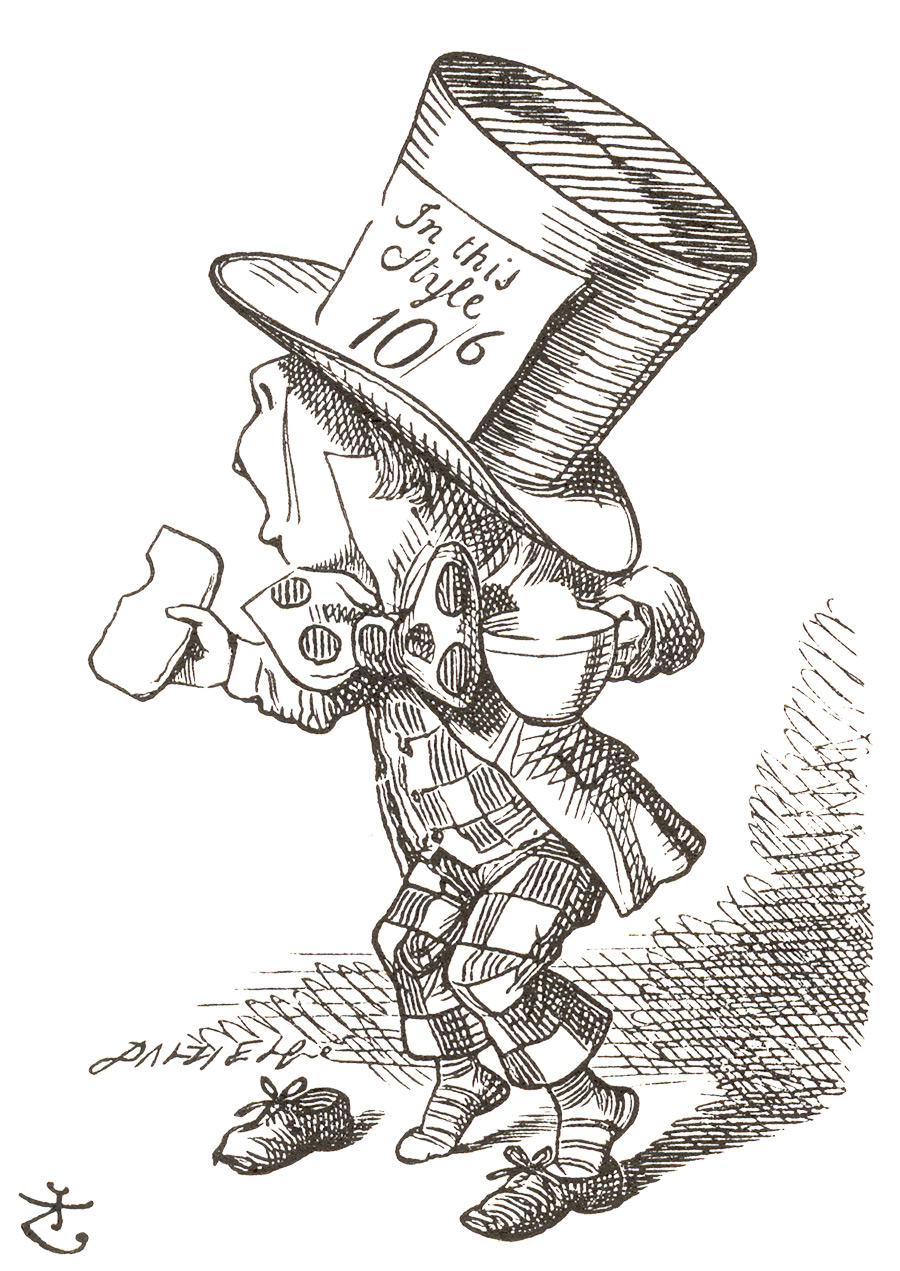
The White Rabbit put on his spectacles.
“Where shall I begin, please your Majesty?” he asked.
“Begin at the beginning,” the King said gravely, “and go on till you come to the end: then stop.”
Chapter XII
Keen to continue the success of Alice, Lewis Carroll composed a sequel, Through the Looking-glass and what Alice found there in 1872, and a version for very young readers, The Nursery Alice, in 1889. He continued to personally review each new printing of Alice, ultimately making over 400 adjustments to the books. While he appreciated the immense financial success the book achieved, quality always trumped profit for him.
Carroll died in 1898 at age 65. When the British copyrights for Alice expired in 1907, many artists jumped at the chance to create new illustrations for the book. While none succeeded at fully divorcing Tenniel’s illustrations from readers’ association with the story, they nonetheless reinvigorated Alice with a twentieth-century perspective.
Consistent with every aspect of Alice’s production, Carroll was very picky about the bindings of his books. In a letter to his publisher, he wrote, “I have been considering the question of the colour of Alice’s Adventures, and have come to the conclusion that bright red will be the best – not the best, perhaps, artistically, but the most attractive to childish eyes. Can this colour be managed with the same smooth, bright cloth that you have in green?”
The bindings of Alice and Looking-glass were frequently reproduced for later editions.
Carroll’s friend Henry Kingsley, a novelist and brother of the better-known writer Charles, encouraged Carroll to publish Alice. In this letter, he expresses his enjoyment of the book.
Lewis Carroll created The Nursery Alice for very young readers, and consistent with other editions, oversaw every aspect of its production. This resulted in a rather expensive book, but Carroll covered much of the extra cost himself: “I am content to reckon my outlay on the book as so much dead loss, and, rather than let the little ones...go without it, I am selling it at a price which is, to me, much the same thing as giving it away.”
A.E. Jackson was one of the first of several illustrators, including Arthur Rackham, who offered startlingly different, and more modern, images of the title character.